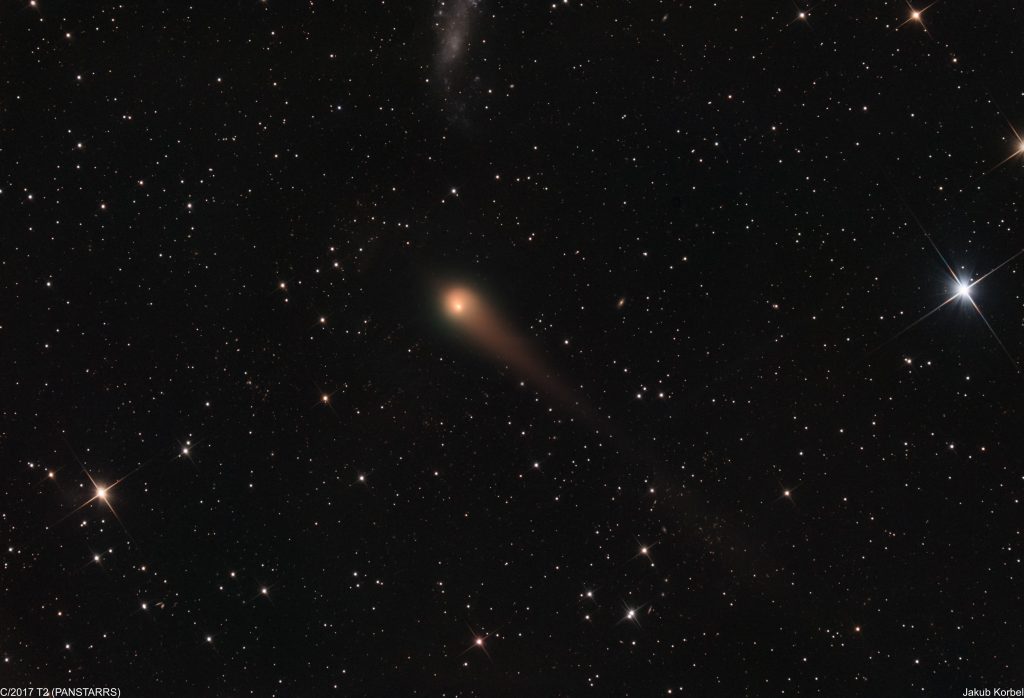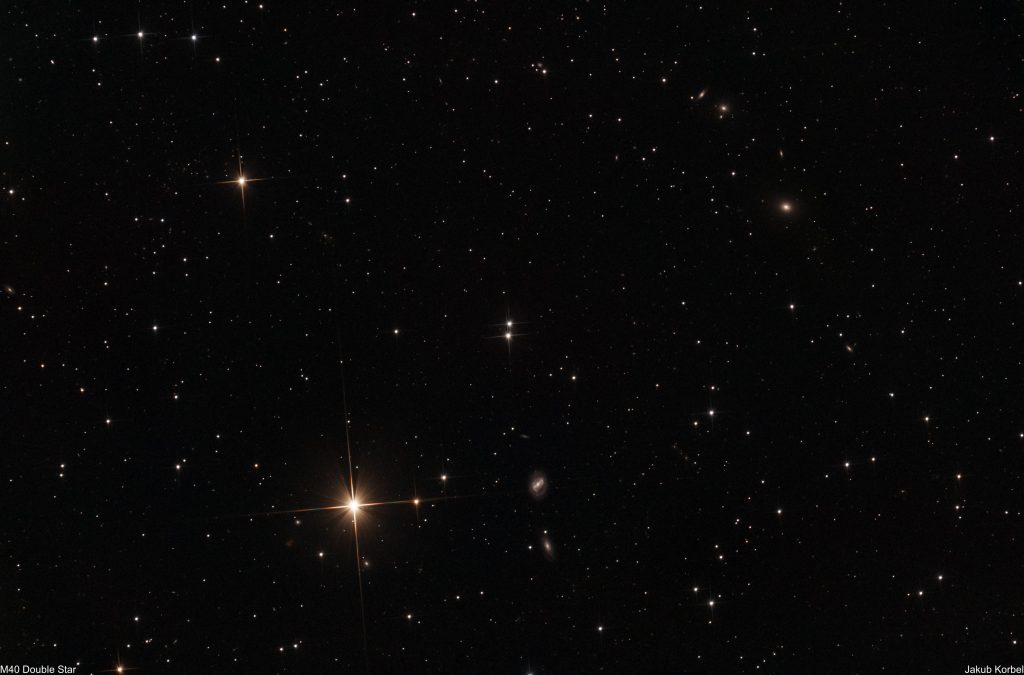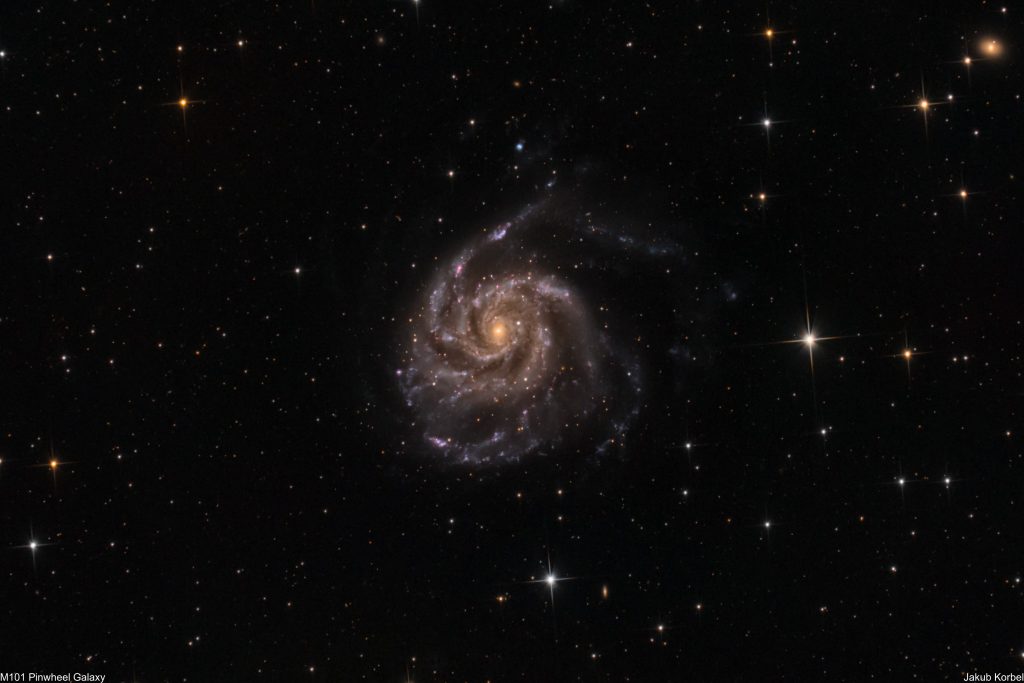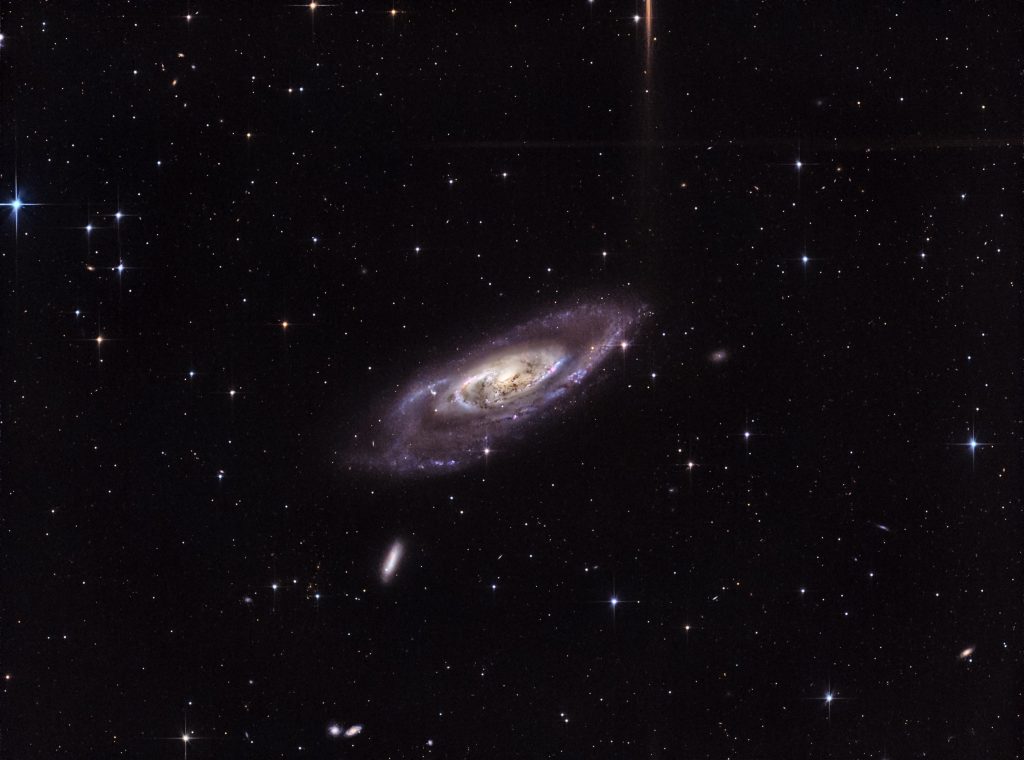I missed the most prominent comet C/2021 A1 (Leonard) in 2021 due to permanent, constant, ever-lasting bad weather. In the last 3 months, I was able to see the star only through the holes in the clouds (except one night during our winter vacation in Laax). At least I have time to process the old data I took a long time ago. In 2020 I took pictures of two comets and here is one of them. It’s called C/2017 T2 (PANSTARRS) and on the 25th of May 2020 was possible to spot it, roaming in the constellation Ursa Major.
I was postponing the processing very long time because the comets are the most difficult object to process. There is a fixed background of the stars and deep space objects and the comet is slightly moving across the field. This means that the pictures must be registered twice and merged together afterward. Since I have plenty of time now, I was able to experiment, and here is the final image:

| Telescope | Newton 254/1000 mm |
| Aperture | 254 mm |
| Focal length | 1060 mm |
| Mount | Gemini G53f |
| Autoguiding | ZWO 174MM, TS 60/240 mm |
| Camera | ZWO 071 Pro @-10°C |
| Corrector | Explore Scientific HR coma corrector |
| Filters | no |
| Exposure | 34x180s, Gain 94, bin 1x1, |
| Date | 2020-05-25 |



